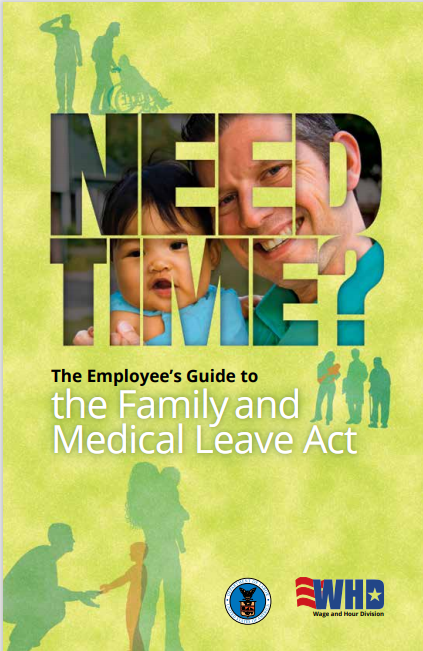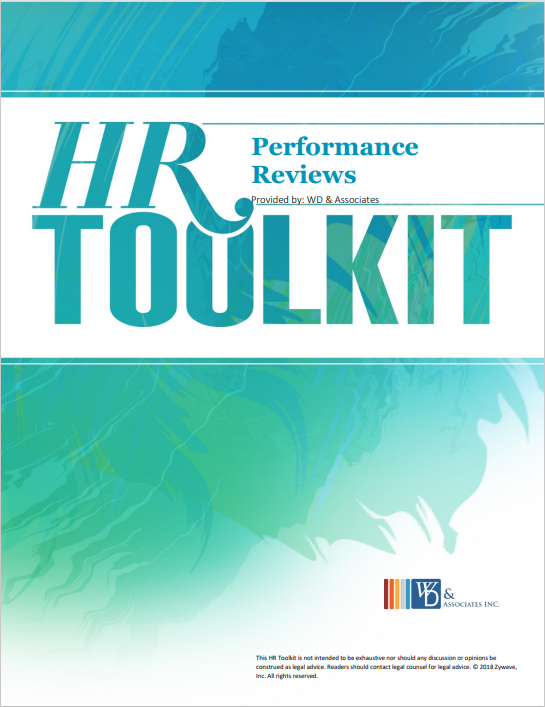Mistakes in employee benefits and human resources can be quite costly to employers—in the form of extra benefits, complaints, lawsuits, government-assessed fines and penalties, and attorney fees, to name a few. Don’t learn the hard way what these mistakes are.
1. Not timely depositing employee contributions into qualified retirement plans.
Employers sometimes wait too long to deposit salary deferrals into a qualified retirement plan. According to the Department of Labor (DOL), such deposits should be made as soon as the contributions can be reasonably segregated from the employer’s general assets, but no later than the 15th business day of the following month. The 15th business day of the following month is an outside guideline, and deposits must be made sooner if possible. If deposits are not timely made, the DOL and Internal Revenue Service (IRS) may levy fines, penalties and retroactive earnings for late contributions. The deposit rule for salary deferrals applies to all types of employee contributions, including special deferrals (such as catch-up contributions), after-tax contributions and loan repayments.
The DOL has established a safe harbor for employers with small plans (fewer than 100 participants at the beginning of the plan year) to timely deposit such employee contributions. Under the safe harbor, if the employer deposits the withheld amounts in the plan no later than the seventh business day following the date the employees would have received the contributions (payday), the employer automatically satisfies
the requirement to timely deposit employee contributions.
Solution: Deposit employee contributions as soon as reasonably possible following issuance of the paycheck from which the contribution was withheld. Employers with small plans should try to take advantage of the safe harbor’s protection by depositing employee contributions within seven business days from the issuance of the paycheck. The DOL’s Voluntary Fiduciary Correction Program (VFCP) offers a method to correct late deposits of employee contributions.
Mistakes in employee benefits and human resources can be costly for employers, in the form of extra benefits, complaints, lawsuits, government-assessed fines and penalties, attorney fees and more.
2. Not making matching and profit-sharing contributions on a timely basis.
Many employers make the mistake of not making these contributions on a timely basis. If your qualified retirement plan provides for matching and profit-sharing contributions, the deadline for making these contributions and depositing them into the plan’s trust is determined first by looking to the plan document. The plan document may contain
deadlines for these contributions. For example, the plan document may require matching contributions to be deposited each pay period.
If the plan document is silent on this issue or requires contributions to be made by the date required by law, then the deadline generally will be determined by IRC 404(a). IRC 404(a) provides that matching and profit-sharing contributions for a plan year must be made by the due date of the employer’s tax return for that year, including extensions. For tax-exempt employers, the IRC deadline is generally the 15th day of the 10th month following the close of the employer’s tax year. If contributions are not made on a timely basis, the same penalties as above apply.
Solution: Read your plan documents and understand when matching and profitsharing contributions must be made.
3. Incorrectly computing matching contributions.
A typical matching contribution formula provides that an employer will pay 50 cents for each $1 an employee contributes to the plan on a pre-tax or Roth basis up to 6 percent of compensation, which results in a maximum employer matching contribution of 3 percent of
compensation. It is most common for plan administrators and payroll systems to calculate matching contributions on a weekly payroll-by-payroll basis. If an employee earning $60,000 a year makes the 6 percent contribution throughout the year on a payroll-by-payroll basis, the employee will contribute $3,600 to the plan, and the employer will provide a matching contribution equal to $1,800. Assume another employee earning the same base pay contributes 12 percent for 6 months. This employee has also contributed a total of $3,600 to the plan, but will only receive a $900 match. This same scenario also often occurs with executives who receive large bonuses early in the year and request the maximum contribution be withheld from the bonus.
Solution: Some employers make “make-up” contributions at the end of the year to ensure that employees making the same annual salary deferrals receive the same matching contributions. If employers are using a Prototype plan, make-up contributions may not be a viable option. In this case, educating employees on the
implications of changing deferral elections and limits is important. If matching contributions are not calculated correctly or in accordance with the plan document, the IRS’s Employee Plans Compliance Resolution System (EPCRS) may allow the employer to correct the error by following a correction method approved by the IRS.
4. Late enrollment of employees into qualified retirement plans.
Employers often fail to timely enroll employees in qualified retirement plans, and sometimes even try to exclude part-time employees from participation. A qualified retirement plan is not required to cover all of an employer’s employees. For example, a plan generally may limit participation to certain groups of employees, as long as the plan satisfies minimum coverage and nondiscrimination requirements. In addition, a qualified retirement plan may exclude an employee based on age (up to 21) or service (generally up to one year of service in which he or she is credited with at least 1,000 hours of service), but not based on part-time status. Also, former employees who are rehired who had completed the plan’s eligibility requirements before terminating may begin participating immediately upon rehire, unless the employee’s original entry date would have been later, in which case the later entry date applies.
If you wrongfully exclude employees, you can jeopardize the plan’s tax-qualified status. If the error is discovered in an audit, the DOL and IRS may levy retroactive employer contributions, elective deferrals and earnings for employees that were wrongfully excluded. Excluding eligible employees from participation is a mistake that may be corrected under EPCRS. The IRS-approved correction for failing to allow an employee to make elective deferrals for part of a plan year is to make an employer contribution equal to 50 percent of the “average deferral percentage” of the employee’s group (either highly or non-highly compensated), multiplied by the employee’s compensation for that part of the year.
Solution: Include in the retirement plan all employees that work at least 1,000 hours
in a 12-month period (unless such employees are excluded based on a “service neutral” classification). Closely monitor employees’ attainment of the plan’s eligibility
criteria and timely provide eligibility information to plan service providers.
5. No plan document or summary plan description.
ERISA requires that employee benefit plans be maintained pursuant to a written instrument and that participants receive a summary plan description (SPD) that contains certain information. The DOL has a rule defining what needs to be in an SPD. Many employers rely on their insurance carriers or TPAs to provide booklets to distribute to employees. Often the booklets provided by carriers and TPAs do not contain all of the information that is required in an SPD and/or will not qualify as a plan document. This is often the case with health and welfare plans.
Failure to provide a plan participant with an SPD within 30 days of an employee request carries a maximum $110 per day penalty (measured from the date that is 30 days after the request). There is no specific penalty for failure to maintain a plan document, but pursuant to ERISA’s general enforcement provisions, any plan participant can bring a lawsuit to require a plan sponsor to prepare a formal plan document where none exists. Criminal penalties may be levied upon any individual or company that willfully violates Title I of ERISA, which could include these disclosure rules (maximums are $100,000 and ten years in prison or $500,000 for a company). Moreover, failing to maintain an updated plan document and/or SPD may jeopardize an employer’s chance of success in a legal dispute with an employee over benefits.
Solution: Have an SPD and plan document prepared for each plan your company sponsors, and keep the documents up to date. In some cases, a simple “wrap document” may suffice to supplement the information provided by the insurance company or TPA. The wrap document fills in the gaps of what you have and what is legally required and can apply to more than one plan.
6. Not communicating SPD changes to participants.
ERISA requires notice to covered participants anytime there is a material modification in a plan’s terms, or there is a change in the information required to be in the SPD. If there is a legal dispute over benefits, courts will often enforce the terms of an out-of-date or incomplete SPD rather than the terms of the plan document, in favor of the participant.
Solution: ERISA allows plan administrators to communicate material changes through a simplified notice called a summary of material modifications (SMM) that limits itself to describing the modification or change. Since there is no guidance on what is a material change, you should err in favor of preparing and distributing SMMs. At a minimum your SMM should contain: (1) the name of the health plan and the SPD to which the SMM relates; (2) a description of the changes or the substituted language; (3) the effective date of the changes; (4) instruction to keep the SMM with the SPD; (5) an explanation that the SMM and the SPD must be read together; and (6) the name and title of the person to contact with questions.
7. Using the wrong definition of compensation when computing retirement plan contributions.
Employees are entitled to receive and make contributions based on the definition of compensation set forth in the plan document, up to applicable limits. Employers sometimes fail to compute profit-sharing contributions based on certain types of compensation (e.g., bonus payments, commissions and service awards), contrary to the plan language. Failure to comply with the terms of the plan can result in disqualification of the plan. To avoid plan disqualification, employers follow EPCRS correction principles and end up making the extra profit-sharing contributions, plus lost earnings, to make the employee plan accounts whole.
Solution: Confirm with the administrator of your qualified retirement plan that you are computing compensation correctly. If any changes are made to the plan’s definition of compensation, make sure to communicate the changes to plan service providers.
8. Failure to compare group disability insurance policies.
Many employers purchase group disability insurance policies without understanding them. They receive complaints from employees because their disability claims are denied because they are not considered “disabled” per the terms of the policy. Purchasing group disability insurance policies that do not provide worthwhile benefits when needed by employees is throwing money away on a useless benefit.
Solution: Choose group disability insurance policies with the assistance of your WD & Associates insurance broker who specializes in these policies.
9. Maintaining a health plan that is inconsistent with an HSA.
Contributions can be made to an HSA only when the employee is not covered by a general purpose health reimbursement arrangement or health flexible spending account (FSA), or other impermissible coverage. An employer that provides impermissible other health plan coverage can unintentionally disqualify its employees from making HSA contributions.
Solution: Consult with your WD & Associates insurance broker, regarding the design of your HRA, health FSA, and other health plans, to ensure they are HSA-compatible.
10. Failure to recognize deferred compensation.
Many employers do not understand IRC 409A, which generally applies after Dec. 31, 2004 to any arrangement that defers compensation more than 2½ months beyond the end of the year in which the individual first had a vested (legally-enforceable) right to the compensation. A violation of 409A is very costly because it results in taxation of the deferred compensation prematurely (when it is vested, not when it is later paid), along with a 20 percent penalty and interest.
Solution: Have your deferred-compensation plans, employment contracts and severance-pay arrangements reviewed by an attorney or financial advisor specializing in 409A.
11. Allowing employees to stay on group health coverage beyond the required time
period.
Many employers allow employees to stay on group health insurance plans after eligibility would otherwise end under the plan’s terms, without first getting approval from the insurance/stop-loss carrier. For example, employers often allow employees on leave to keep their health insurance beyond the period of time required by the FMLA. If the employee incurs significant medical expense and the insurance/stop loss carrier investigates, the carrier may decline to provide coverage, leaving the employer to “self-insure” the entire cost.
Solution: Offer COBRA coverage to employees that need extended leave but have exhausted or are not eligible for FMLA leave. In this way, employers shield themselves from liability. The employer can continue to pay the employee portion if they desire. Also make sure that insurance/stop-loss carriers are aware of collective bargaining agreements that may apply to coverage issues and have signed off on these agreements in writing.
12. State/Federal FMLA coordination.
Many employers assume that state and federal FMLA laws are congruent and need not be accounted for separately. This sometimes provides employees with more (or less) leave than is required by law. If employees are offered more FMLA leave than they are entitled to, then the same risk as described in 11 above can occur. Conversely, if employees are not allowed to take as much leave as they are entitled to, employers can find themselves facing a lawsuit or a complaint.
Solution: Set forth the state and federal entitlements separately in your FMLA Policy and understand how they work together.
13. Independent contractor/temporary employee issues.
Some employers make the mistake of including independent contractors in health plan coverage and/or excluding temporary employees from benefit plan coverage. If an employer allows independent contractors to participate in its health plan, its health plan is technically a “multiple employer” plan, and an IRS Form M-1 needs to be filed annually. Failure to do so can cause the DOL to levy penalties. If the employer has wrongfully excluded “common law employees” from its benefit plans, those “employees” can seek retroactive reinstatement to the employer’s benefit plans, potentially causing large damages to the employer.
Solution: Do not allow independent contractors to participate in your health plan, or file an annual Form M-1. Ask your attorney or financial advisor to assist you if you have never filed a Form M-1 before. To preclude unintentional inclusion of “common law” employees, craft your benefit plan language to specifically exclude individuals not on your payroll.
14. Misclassifying an individual as an independent contractor.
Many employers misclassify individuals as independent contractors when they do not qualify under the law as an independent contractor for unemployment and worker’s compensation purposes. By making such a mistake, employers could owe thousands of dollars in back premiums for worker’s compensation insurance, as well as premiums for unemployment insurance. Worse yet, the employer could be responsible for actual medical costs for an individual not properly covered under your worker’s compensation policy. The employer may also owe income taxes and social security taxes.
Solution: Review your independent contractor relationships to ensure consistency with state and federal standards. Make sure your independent contractors have an FEIN and are incorporated. Ask them to form an LLC if they are not. Ask yourself whether they are doing similar work for other companies in the same industry. If the answer is “no,” they may not be treated as an independent contractor in the eyes of the law.
15. Update your restrictive covenants.
Employers spend a lot of time and resources drafting enforceable restrictive covenants. Because the law changes from time to time due to various court decisions, covenants can become outdated and unenforceable. In some states, the law states that if any portion of a restrictive covenant is overbroad, then the entire agreement is unenforceable. For example, a no-hire clause in your agreement could invalidate your entire non-compete as overbroad. If your restrictive covenants are unenforceable, you may not be able to protect your customer base, continuing revenues and/or confidential information if a key employee leaves.
Solution: Have your restrictive covenant agreements reviewed annually to make sure that they are consistent with the ever-changing law. Legal counsel experienced in this area should be able to review your restrictive covenants in a cost-efficient manner to determine their enforceability.
16. Misuse of performance evaluations.
Some managers and supervisors make the mistake of not being honest and straightforward when evaluating employees. This mistake often makes it difficult to defend against claims of discrimination and wrongful discharge when managers are less than honest and direct on performance evaluations.
Solution: Do not “sugarcoat” criticisms of employee performance. Not only will you not give the troubled employee an opportunity to correct his or her performance problems and become more productive, but you will also not have an appropriate record of performance deficiencies in the event it becomes necessary to defend a termination or disciplinary action.
17. Contesting unemployment compensation for performance reasons.
State laws may differ, but generally employees who are terminated for performance reasons are entitled to unemployment compensation. Employers often waste resources by contesting the unemployment compensation claim. (If an employee has filed a series of claims against the employer and is not represented by an attorney, it may make sense to contest the UC claim, so you can “nail down” the employee’s version of the facts.) Generally, an employee is not entitled to unemployment compensation only if he or she quits or is terminated for misconduct. State laws may differ; check with your legal counsel.
Solution: Understand the standards for misconduct under unemployment compensation law and how they differ from performance-related terminations. Update your employee manuals, making sure the policies are accurate and that you can prove the employee received a copy of the manual. Be sure to carefully and thoroughly document any misconduct and disciplinary issues that have led to an employee’s termination.
18. Recalculating overtime when paying performance-based bonuses.
Employers often forget to recalculate overtime previously paid and make additional overtime payments when paying performance-based bonuses over multiple pay periods. State wage and hour laws differ, but generally if a wage claim is brought, an employer could owe not only back pay, but interest, penalties and attorney fees.
Solution: Check with your legal counsel to make sure you know whether the bonuses you pay qualify for recalculation of overtime. If so, you need to go back and apply the bonus over the relevant pay periods and determine the appropriate overtime rate and whether additional overtime payments are required.
19. Failing to clearly define when commissions are payable.
Many employers make the mistake of not having a written policy defining when commissions are due to employees. State laws differ, but if an employer does not have an appropriate policy, an employee can leave or be fired and still be due thousands of dollars in commission payments.
Solution: Make sure that your commission policy is in writing and clearly defines when employees have earned commissions and how they are handled upon termination.
20. Other common HR mistakes.
- Paying severance without a release. By doing so, you are allowing employees to make future claims.
- Failing to conduct exit interviews. Not only will you gain valuable information to make the workplace more productive, but you may also be alerted to any potential claims.
- Using outdated employment applications. Make sure your applications are consistent with the nuances of your state and local laws (such as ban-the-box) as well as general anti-discrimination laws.
- Failing to comply with the requirements of the Fair Credit Reporting Act (FCRA) when utilizing a third-party to conduct background checks, including various disclosures and notices. Many employers fail to provide the written release and disclosure form as a separate, stand-alone document as is required by the FCRA. Class action lawsuits under the FCRA have risen dramatically in recent years.
- Failing to inform an employee who has complained of harassment of the results of your investigation and remedies and discipline. When an employee complains of harassment, the surest way to invite a complaint with the state or federal government is to not inform the employee about the results of your investigation and any discipline handed out to the alleged harasser. State laws may differ, so it is important to check with your legal counsel.
Is your business set up with the best approach to employee benefits and HR? Not sure? Contact WD & Associates to discuss how we may be able to help. You can also save the information in this blog by downloading the PDF here.
This HR Insights is not intended to be exhaustive nor should any discussion or opinions be
construed as professional advice. © 2015 Zywave, Inc. All rights reserved.











Leave a comment